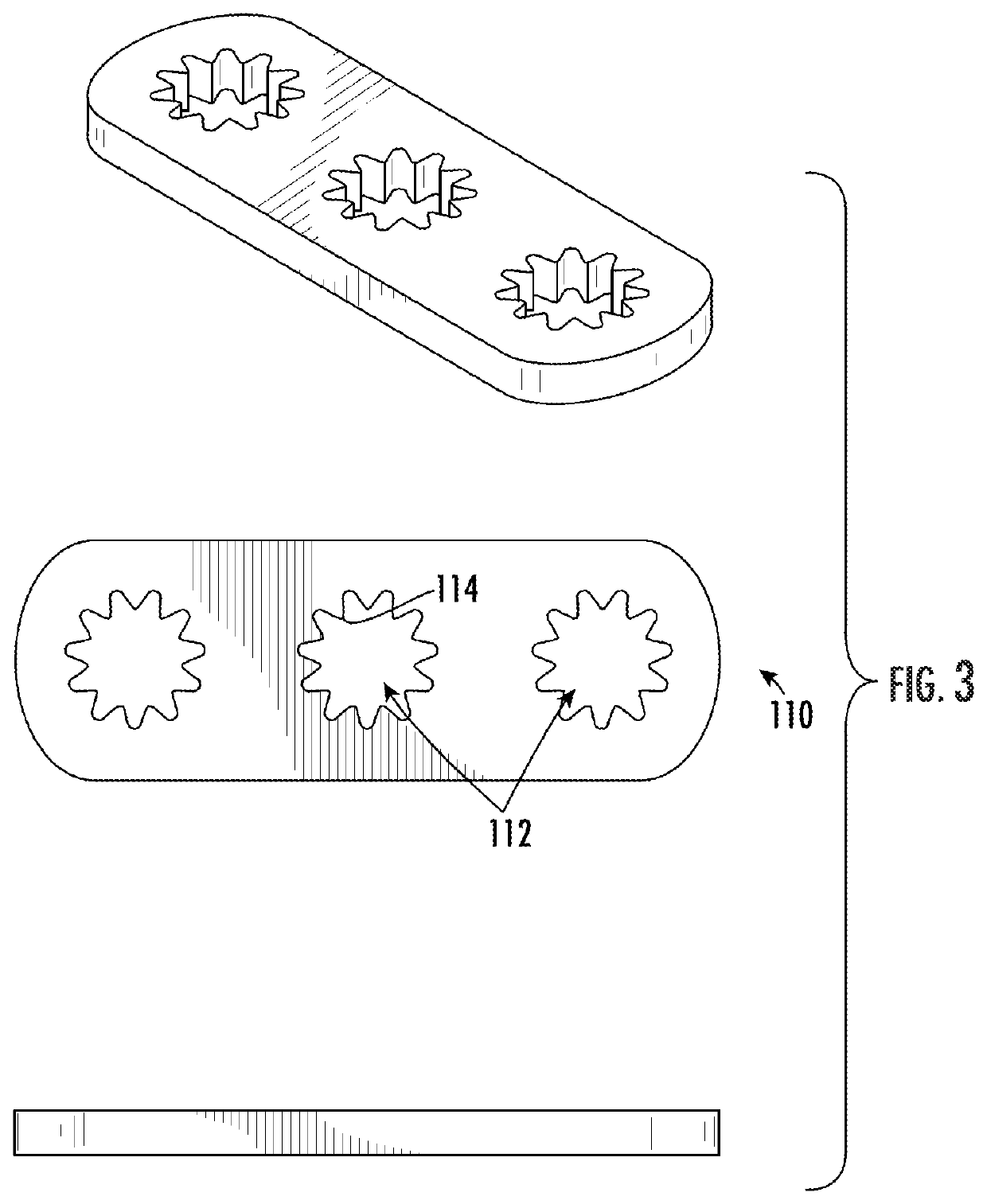No-tie shoelaces
a shoelace and no tie technology, applied in the field of shoelaces, can solve the problems of laces dropping on the floor, undone, and knots being created
- Summary
- Abstract
- Description
- Claims
- Application Information
AI Technical Summary
Problems solved by technology
Method used
Image
Examples
Embodiment Construction
[0021]The shoelace system disclosed herein is made from only two parts in addition to the laces to make the system simple and easy for the user to install and use. As shown in FIG. 1, the shoelace system includes an elastic shoelace 100 with a T-bar attachment 102 on a first end 104 of the shoelace 100. The T-bar attachment 102 is able to rotate such that the T-bar attachment 102 is essentially perpendicular to the shoelace. Thus, when the shoelace 100 is pulled through an eyelet 106 of a shoe, the T-bar attachment 102 anchors that first end 104 of the shoelace to the aforementioned eyelet 106. The T-bar attachment 102 is normally invisible once installed as it is typically positioned behind the eyelet 106 on the inside of the shoe. In a particular embodiment, the T-bar attachment 102 has a first portion that is at least partially flat, and a second portion that is at least partially cylindrical and configured to accommodate an end of the shoelace 100 inserted into the at least part...
PUM
 Login to view more
Login to view more Abstract
Description
Claims
Application Information
 Login to view more
Login to view more - R&D Engineer
- R&D Manager
- IP Professional
- Industry Leading Data Capabilities
- Powerful AI technology
- Patent DNA Extraction
Browse by: Latest US Patents, China's latest patents, Technical Efficacy Thesaurus, Application Domain, Technology Topic.
© 2024 PatSnap. All rights reserved.Legal|Privacy policy|Modern Slavery Act Transparency Statement|Sitemap



